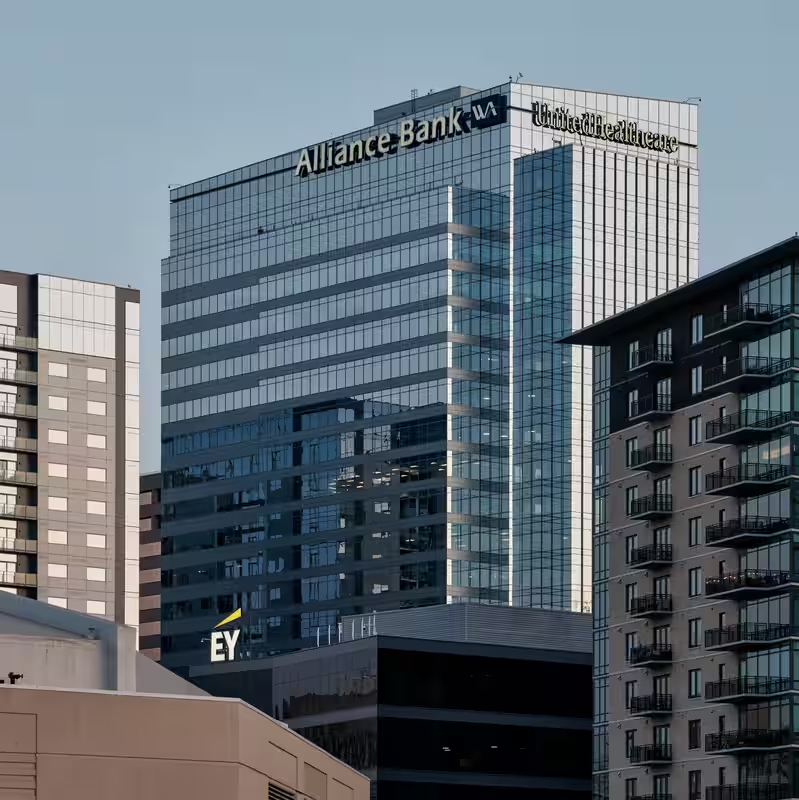Table of Contents
- Rising Alarm Over Bank Loan Defaults
- Market Reaction: Stocks Tumble, Treasury Yields Drop
- Key Bank Exposures and Fraud Allegations
- Funding Stress Hits Short-Term Markets
- Expert Outlook: Bubble or Blip?
- Sources
Rising Alarm Over Bank Loan Defaults
After a summer of record-breaking stock gains and resilient economic data, investors are suddenly on edge. The culprit? A wave of souring loans surfacing across U.S. bank balance sheets—particularly in the commercial real estate and subprime auto sectors.
What began as isolated incidents has now snowballed into a broader concern. Major institutions like Zions Bancorp and Western Alliance Bank reported significant losses this week, with Zions taking a $50 million charge-off tied to distressed commercial mortgage investors, and Western Alliance alleging fraud in its commercial real estate loan portfolio.
Market Reaction: Stocks Tumble, Treasury Yields Drop
The fallout was immediate. On Thursday, the KBW Bank Index plunged 3.6%—its worst single-day drop since April—dragging regional bank stocks down with it. Zions and Western Alliance shares each fell by double digits before partially recovering.
Even giants weren’t spared. Despite reporting strong quarterly profits, JPMorgan Chase, Citi, and Goldman Sachs all saw their shares dip more than 5% this month.
Meanwhile, investors flocked to safety: the 10-year Treasury yield dropped below 4%—its lowest level in over a year—as bond prices rose amid growing economic uncertainty.
Key Bank Exposures and Fraud Allegations
The trouble isn’t limited to real estate. The recent bankruptcies of subprime auto lender Tricolor and auto parts supplier First Brands Group have exposed lenders like JPMorgan, Fifth Third Bancorp, and investment bank Jefferies to unexpected losses.
Jefferies’ stock cratered nearly 11% on Thursday, adding to a 34% year-to-date decline—despite assurances that its exposure would be “limited.”
JPMorgan CEO Jamie Dimon didn’t mince words during the bank’s earnings call: “When you see one cockroach, there are probably more.” His warning resonated across Wall Street, amplifying fears of hidden risks in corporate and consumer debt portfolios.
Funding Stress Hits Short-Term Markets
Beyond equities, signs of strain are emerging in the plumbing of the financial system. The Secured Overnight Financing Rate (SOFR)—a key benchmark for short-term lending—rose to 4.30% on Friday, breaching the Federal Reserve’s target range of 4.25% for the first time in over a year.
This rare move signals tightening liquidity in money markets, driven by a confluence of factors:
- Corporate tax payments draining cash
- Demand for funds to settle new Treasury auctions
- Reduced willingness among institutions to lend overnight
Analysts warn that if this funding pressure persists, the Fed may need to step in with liquidity tools—though most believe the current stress is manageable for now.
Expert Outlook: Bubble or Blip?
Not everyone is sounding the alarm. Bank of America analysts acknowledged the weakness but concluded: “Broad credit market fundamentals remain in good shape.”
Still, others see deeper vulnerabilities. Justin D’Ercole, founder of hedge fund ISO-MTS, argues the U.S. is sitting on a “serious credit bubble” that requires a “perfect economy” to avoid bursting.
“You need low volatility, stable interest rates, and everything else to go right,” D’Ercole said. “Right now, we’re getting none of that.”
With year-end balance sheet adjustments looming and a government shutdown limiting economic data, markets may remain on edge through the final quarter of 2025.
Sources
The New York Times: Investors Shudder at Signs of Loan Trouble in Banks




